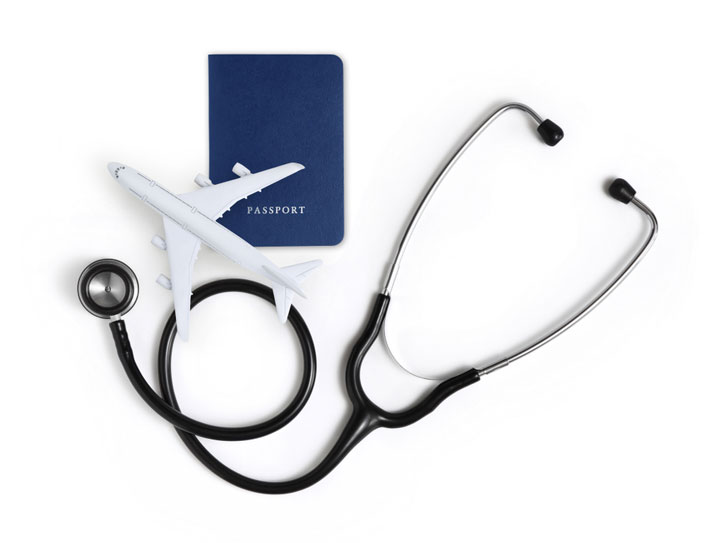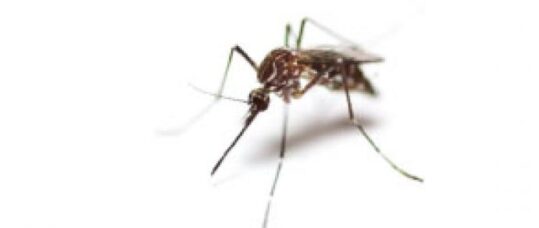Infection Control Travel Nurse: An Overview and FAQs
by Trusted Nurse Staffing | Nov 14, 2023 | News | 0 comments

Of all the forces that threaten our health, communicable diseases present a unique challenge to healthcare professionals — especially nurses, who spend a significant amount of time with sick patients. The microscopic culprits of these diseases are constantly evolving, requiring us to modify our tactics so that they don’t get the upper hand in the lives of individuals or whole populations.
As a nurse, would you like to have greater assurance that the facilities you work in are well-prepared for invisible invasions that have the potential to plague society? Do you have an uncompromising commitment to the high standards that keep germs at bay? If so, infection control travel nursing might be for you.
Here we discuss all you need to know about infection control travel nursing, including the responsibilities involved in the profession and the steps to making it your career.

Table of Contents
What is an infection control travel nurse, 8 responsibilities of an infection control travel nurse.
- Infection Control Travel Nurse: FAQs Regarding the Profession
How To Become an Infection Control Travel Nurse
Find an infection control travel nurse contract with trusted nurse staffing.
An infection control nurse (also known as an infection prevention nurse) helps prevent, identify, and manage the spread of infectious agents like bacteria and viruses. Research, active investigation, teaching, and evaluating are a few of the tasks the infection control nurse performs to protect patients, staff, and visitors from the spread of disease.
Infection control nurses don’t typically work directly with patients all of the time as does a bedside nurse. Rather, they deal more with managing, devising plans and procedures, ensuring everyone is following protocols, and more. The following responsibilities make up the bulk of an infection control nurse’s work.
#1: Observe Data
Infection control travel nurses gather and observe data regarding various types of infectious agents. It is critical that your teaching and planning be based on evidence. Furthermore, you can gather and analyze follow-up data to be sure that your plans have been effective.
Understanding data that comes specifically from your facility is just a start. You can get a more general picture of a particular pathogen’s activity and its effects by reading academic research and interpreting the facts and trends reported in the general population.
#2: Teach Prevention Techniques
Teach and train healthcare providers, public health professionals, and the community techniques and protocols to prevent infection. This is important to do proactively so that infection control can be an ongoing endeavor that everyone participates in.
Also, everyone being prepared in the case of an emergency can keep a bad outbreak from becoming uncontrolled.
#3: Work With the CDC
As an infection control travel nurse, you’ll need to be aware of new announcements by the CDC, which may include new findings relevant to current infection control procedures. Work with the CDC to be informed of their guidelines for infection control and to ascertain that you are properly implementing and enforcing those practices that meet those guidelines.

#4: Develop Plans
Use your knowledge of medical procedures and treatments to develop plans and policies to help healthcare providers prevent the spread of disease within the facility. Include plans to help patients understand the impact of their health practices. Some of these plans are for emergency situations and should help minimize the impact of a potentially severe outbreak.
#5: Lead the IPC Program
You will likely be in charge of your facility’s Infection Prevention and Control Program, which coordinates all activities related to the prevention and control of infectious diseases, including:
- Developing and carrying out policies and procedures
- Educating patients and staff
- Investigating outbreaks and monitoring the prevalence of infectious diseases that are not currently considered widespread
#6: Decrease the Rate of Infection
To decrease the rate of infection in your facility, you must make careful observation of your surroundings and the behaviors of healthcare providers and patients. Take note of areas that need improvement so that you can factor them into your plans to improve the hygiene and cleanliness of your facility.
#7: Determine the Origin of Infection
Understanding where an infection has come from can help prevent future infections and stop the spread of disease. Is the pathogen a bacterium, a virus, a fungus, or a parasite?
Closely associated with the origin of an infection is its mode of entry. For instance, a pathogen may be airborne, bloodborne, or sexually transmitted. It may have been ingested, inhaled, or transmitted by direct contact or indirectly through items used in common or by soiled materials. These factors largely determine the techniques used to limit its spread.
#8: Help Develop Treatment Modalities
This may not be something you expect nurses to assist with, but as workers on the front lines, nurses may see much that escapes the notice of other healthcare providers. As such, they play a key role in finding treatments for their patients and determining whether adequate treatment has been provided.

Infection Control Travel Nurse: FAQs Regarding the Profession
What are some qualities of a great infection control travel nurse.
The following qualities are important for an infection control nurse to fulfill the tasks described above:
- Communication skills : The nurse’s ability to communicate effectively to patients and their families about infection prevention leads to greater compliance and thus prevents the spread of communicable diseases.
You may also be the liaison between your facility’s healthcare providers and the CDC, in which case you must be able to effectively communicate the nature of various pathogenic threats.
- Research skills : Understanding evidence of emerging pathogens presented via scientific studies requires strong analytical skills. You must comprehend how the pathogen is transmitted and what strategies can be utilized to prevent its transmission. Then you must be able to make relevant, helpful decisions based on the research you’ve analyzed.
- Assessment skills : Be able to assess a patient’s condition quickly and accurately to determine when infection control practices are urgent. This means understanding the signs and symptoms of infection and taking the appropriate action to prevent its spread. It might include following protocols for isolation of patients or contact tracing .
- Understanding of the human microbiome : You must understand how colonization, contamination, and infection relate to one another in order to approach infection control appropriately.
- Problem-solving skills : To develop effective plans for addressing outbreaks of infection or just preventing disease transmission in general, the nurse must be able to troubleshoot procedures that haven’t been effective or devise time-saving and less complicated ways of achieving cleanliness.
- Organizational skills : You must be organized in order to keep track of patients’ records as well as records of infection control protocols. It helps to be meticulous and detail-oriented so that no symptoms are overlooked or breaches of protocol allowed to continue.
- Leadership skills : A leader in this setting must be able to motivate and confidently guide his or her team toward the goal of containing infectious diseases as much as possible. Strong leadership skills are essential when challenges and insecurities arise among members of the team or within the population the team is serving.
If you possess or are cultivating these qualities, search now for a specific job that you feel would be a good starting point for your career as an infection control travel nurse.

What Is the Demand for Infection Control Travel Nurses?
With more outbreaks like ebola and pandemics like COVID-19, there’s a need for infection control nurses, especially travel nurses willing to take contracts where they’re needed. (If you are already a staff nurse, a transition to travel nursing might be a new and exciting option for you.)
Even when there is no official outbreak, infection control nurses are still necessary components of a healthcare team because they ensure that healthcare facilities are safe and sanitary for everyone. Their role of enforcing infection control techniques is critical to the prevention of hospital-acquired ( nosocomial ) infections.
There is a demand for infection control nurses in every state because they play such an essential role in preventing infections.

Where Does an Infection Control Travel Nurse Work?
Infection control travel nurses are regularly needed in any of the following settings:
- Hospitals : The infection control nurse helps coordinate a comprehensive plan for preventing infection that includes educating patients and hospital employees to ensure proper sanitation practices.
- Long-term care facilities : Patients in these facilities have many health risks, meaning it is all the more critical to prevent infection in their case.
- Ambulatory and outpatient care centers : These settings have a significant amount of traffic and so benefit immensely from nurses who constantly monitor and enforce sanitary practices.
- Home health and hospice: More patients move to these settings since evidence has shown that shorter hospital stays reduce infection risk .
- Prisons : Disease can spread quickly in this environment because there is a high volume of people in tight quarters.
Try out Pronto , our recommended search tool, to find specific jobs that meet your desired criteria in the area of your choice.
How Much Does an Infection Control Travel Nurse Make?
An infection control nurse’s salary will vary by location and experience, but $1,687 per week or $112,564 per year is the national average. Keep in mind, however, that travel nurses in this field are paid significantly more than their stationary counterparts. In New York, for instance, travel nurses make $2,574 per week on average.
The following steps are prerequisites to becoming an infection control travel nurse:
- An Associate Degree in Nursing (ADN) is the standard minimum requirement, but a Bachelor of Science in Nursing is preferred.
- After passing the NCLEX to become certified as an RN, you’ll need to apply for a state license in the state you plan to practice in.
- Generally, two years of experience as an RN are required before you can take the exam in infection prevention and control.
- Pass the CIC certification exam through the Association for Professionals in Infection Control and Epidemiology .
- Acquire a Nurse Licensure Compact (NLC) to be a travel nurse in almost any state.
Trusted Nurse Staffing is glad to help you secure a contract to become an infection control travel nurse in the state you would like to work in. Contact us today to learn more about how you can gain valuable experience and expand your influence in the field of nursing.
Recent Posts
- Can Travel Nurses Have Mentors? The Types of Mentors Available To Travel Nurses and How To Find One
- Making the Switch From Staff Nursing To Travel Nursing: Considerations and Tips To Make the Transition Successful and Stress-Free
- Travel Nurse Job Outlook for 2024 and Beyond
- Build Your Career: 6 Networking Tips for Travel Nurses
- Career Changes for Nurses Who Want To Transition Away From a Clinical Setting
Career Advice > Nursing Professions > Nursing Roles > How to Become an Infection Control Nurse
How to Become an Infection Control Nurse
Search resource center.

Nurses and infection control — probably not the first duo that comes to mind, right? But working as an infection control nurse is an enjoyable career path with big perks, including the chance for international travel and a competitive salary.
These professionals work tirelessly to protect patients and communities from tiny organisms that can cause massive trouble (i.e., COVID-19). With infectious diseases still going strong and a nursing shortage hitting hospitals, your expertise as a healthcare professional in this field is crucial — ready to answer the call?
Check out our step-by-step guide on how to kick-start your journey in this impactful specialty.
Infection Control Nurse : Career Snapshot
- Mission: Safeguarding patients and communities from infections
- Responsibilities: Surveillance, education, policy development, and outbreak management
- Workplace settings: Hospitals, clinics, public health agencies, and research institutions
- Demand: 6% growth expected for RNs — higher than average for all occupations
- Path: Nursing degree followed by the option for infection control certification
- Salary: Approximately $100,945 a year
- Perks: Non-bedside role and the potential for international travel
- Cons: Exposure to infection
What Is Infection Control Nursing ?
These professionals prevent and manage infections, acting as frontline defenders of healthcare safety . They implement and manage infection prevention measures, which may involve working with relevant authorities (such as state departments of health or federal organizations). This dynamic job calls for sharp focus, effective communication, and the ability to make thought-out decisions quickly to keep patients and communities safe.
What Do Infection Control Nurses Do?
Unlike bedside nurses, infection control nurses are generally focused on big-picture planning. Sure, you may need to perform usual nursing tasks like head-to-toe assessments and medication administration once in a while, but infection control nurse daily activities typically include:
- Making sure hospitals follow safety rules and infection control plans .
- Checking data for infection trends and risks.
- Creating and enforcing infection control protocols.
- Monitoring and regulating antibiotic usage to prevent antibiotic resistance.
- Educating patients, coworkers, and communities on preventing infections.
- Investigating and handling outbreaks.
- Collaborating with authorities to reduce infection risks.
- Developing strategies to protect patients and communities.
- Staying on top of global health news for preparedness.
- Connecting with the community for awareness and education.
Where Do They Work?
Infection control nurses can work in various healthcare settings and beyond. Some common places include:
- Outpatient clinics
- Long-term care facilities
- Public health agencies
- Research institutions
- Corporate settings
- Government agencies
- Educational institutions
- International organizations
- Nonprofit organizations
Let’s explore the key steps to start your journey into this unique nursing specialty .
1. Get a Nursing Degree
The fastest way to become a nurse involves getting an associate degree in nursing (ADN), which can be accomplished in as little as six months. You can also choose to pursue a bachelor of science in nursing (BSN) degree for a more extensive education.
2. Obtain Licensure
To become a licensed registered nurse (RN), you’ll need to pass the NCLEX-RN (National Council Licensure Examination for Registered Nurses) and submit all the necessary documents to your state’s board of nursing.
3. Boost Your Skills with Experience
Gain practical experience in relevant specialties, such as medical-surgical , community health , or critical care . This background forms a solid base for moving into infection control.
4. Attain Infection Control Nurse Certification
There are several organizations offering infection control certification for nurses online. If you want to boost your credibility, you can choose to pursue one of these certifications:
- Certification in Infection Control (CIC)
- Associate — Infection Prevention and Control (a-IPC)
- Long-Term Care Certification in Infection Prevention (LTC-CIP)
- Advanced Certification in Infection Prevention and Control (AD-CIP)
- Certified Healthcare Leader (CHL)
- Certified Instrument Specialist (CIS)
- Certified Healthcare Environmental Services Professional (CHESP)
5. Keep Advancing With Continuing Education
Grow in your knowledge and skills by attending conferences , joining professional organizations, and taking continuing education courses. If you are interested in boosting your credentials, IntelyEdu is here to help. We offer ANCC-accredited online courses that are affordable and can be taken at your own pace and time. Here are our top picks for you:
- Infection Control: Best Practices (1 NCPD)
- Advanced Infection Control for COVID-19 (1 NCPD)
6. Pursue Advanced Education
If you aim high in your career, you can choose to pursue advanced education by obtaining a master of science in nursing (MSN) or a doctor of nursing practice (DNP) degree, or becoming a nurse practitioner . Although this step isn’t required to join the field of infection control, it can be a great way to take your career to the next level.
Infection Control Nurse Salary
The typical salary for infection control nurses in the U.S. is about $101,000 per year, but it can range from $92,145 to $110,615. That’s well above the national average RN salary of $89,010 per year. Your pay can vary based on factors like education, certifications, experience, and geographic location.
If you are open to relocation, consider submitting your nurse resume to one of these top-paying states:
- Massachusetts
Frequently Asked Questions About Infection Control Nursing
Is infection control nursing dangerous.
Like any healthcare role, infection control comes with its own set of risks. These can include exposure to pathogens, needlestick injuries, and the potential for contracting infections. However, with proper training, adherence to safety protocols, and the use of protective equipment , these risks can be minimized.
Can an LPN be an infection control nurse ?
Yes, a licensed practical nurse (LPN) can work in this specialty with the appropriate training and qualifications. However, RNs usually have more job opportunities since they have a broader scope of practice, allowing them to work in different healthcare settings and take on different roles.
How can infection control nurses travel internationally?
They can travel internationally by working for organizations like World Health Organization (WHO) and Centers for Disease Control and Prevention (CDC), where they may be involved in global health initiatives, training programs, and responding to infectious disease outbreaks worldwide.
How do infection control nurses handle outbreaks?
They manage outbreaks by implementing preventive measures, coordinating response plans, and collaborating with public health agencies to identify, isolate, and manage cases effectively.
Find Your Best Job Match on Intelycare
Interested in becoming an infection control nurse or exploring other specialties? Find out how IntelyCare can match you with the best-fitting nursing jobs nationwide.
Related Articles
Picu vs. nicu: what’s the difference, paramedic vs. rn: what’s the difference, is dou nursing right for you, is being an ivf nurse right for you, how to become an oncology nurse practitioner, related jobs.
How to Become an Infection Control Nurse
What is an infection control nurse.
- How to Become
- Career Outlook

Though people tend to think of healthcare practitioners as people who treat and cure disease, Infection Control Nurses work to identify, prevent and control diseases before they can occur or spread. Due to the current situation with COVID-19, Infection Control Nurses are more important than ever before! If you want to make a big impact, this may be the right path for you.
We’ll explore what an Infection Control Nurse does, how to become one, and more in this helpful guide.
If you’re ahead of the game and ready to start this journey, your first step is becoming a registered nurse. Check out some featured nursing programs below!
Regardless of the healthcare setting, there is always a chance that bacteria or viruses can lead to a lethal outbreak of disease. Infection control nurses are specially trained professionals who understand how infectious agents spread and work both to prevent an outbreak from happening and to address and resolve the issue when it does happen.
Infection Control Nurses play a vital role in the wellbeing of both the healthcare setting in which they work and the community at large.
If you choose a career in infection control, it means going beyond a basic nursing education, but the investment of time and effort will lead to professional respect and rewards, as well as the personal satisfaction of knowing that you are protecting many people from getting sick.
Infection Control Nurses are far more likely to be involved in research, education, policy, and project management than in hands-on care. And the interventions that Infection Control Nurses pursue are data-driven and geared towards education and policy.
Though all medical professionals are trained in the basic principles of hygiene and disease control, infection control nurses go beyond those simple steps, analyzing and investigating the spread of infectious agents, learning how to isolate and control them, and working to prevent their further impact. The impact of their work is far-reaching and incredibly important!
>> Show Me Online Nursing Programs
What Do Infection Control Nurses Do?
Rather than being a patient-facing practitioner, Infection Control Nurses are problem solvers who use their skills to conduct and analyze research, and then use what they’ve learned to educate and implement new policies and procedures that provide improved protection.
A big part of the Infection Control Nurse career is research. There is a wealth of information being collected regarding infections and viruses. Some of this data is collected by other professionals and organizations and provided for analysis, and some are collected by the individual infection control specialist while conducting research. All of it is compiled and analyzed in order to keep the nurse informed and ready to protect their facility and community.
Communicate
Infection Control Nurses will communicate to colleagues within the facility as well as to patients and their families the relevant research they discover. The goal is always to minimize the risk of infectious disease and to understand the appropriate response should a virus or contagious infection impact the community.
Infection Control Nurses often assume the role of educator and liaison. They may be in direct contact with the Centers for Disease Control (CDC) or the National Institute of Health and their facility’s medical staff and administration so that they can communicate the latest updates regarding a potential infectious threat and best practices that should be applied in defense or response to it.
At all times, Infection Control Nurses are looked to for guidance and innovative ways to improve proactive practices against the spread of disease.
Infection Control Nurse Salary
Infection Control Nurses play a pivotal role in the well-being of their community and in the safety of the facilities in which they work. Their efforts significantly reduce patient infections and illnesses among staff, leading to reductions in costs of hospitalization and, more importantly, life years. As a result, they are well compensated, with an average annual salary of $87,739/year or $42/hour, according to ZipRecruiter , with a range of $24,000 to $153,000.
In addition to their pay, they are also rewarded with benefits packages, which typically include health, dental, vision and life insurance, childcare reimbursement, health savings accounts, tuition reimbursement, paid vacation, personal and sick leave, and more.
Salary Factors
Regional shortages and increased needs for infection control have led to a wide disparity in the amount that an infection control nurse can expect to be paid. So salary will vary greatly by city and state.
How Do You Become an Infection Control Nurse?
1. become a registered nurse.
Become a licensed Registered Nurse by earning either a Bachelor of Science in Nursing (BSN) or an Associates Degree in Nursing (ADN) and then passing the
NCLEX-RN exam . Earning a BSN takes a minimum of four years, while an ADN generally takes two years.
2. Spend 2+ Years Working in Infection Control
After becoming a Registered Nurse, the Association for Professionals in Infection Control and Epidemiology (APIC) requires that candidates spend a minimum of two years working in the field of infection control before they are able to take and pass the certification exam for becoming an Infection Control Specialist.
3. Earn Your CIC Certification
Once you have completed these requirements you are eligible to take the CIC Certification Test administered by the Certification Board of Infection Control and Epidemiology .
What is the Career Outlook for Infection Control Nurses?
The nation has long been challenged by a national nursing shortage that shows no sign of going away. According to the Bureau of Labor Statistics , there is expected to be a 6% increase in demand for Registered Nurses for the next ten years.
The combination of that long-standing need with the increasing number of dangerous and costly infections in medical settings and viral outbreaks including Ebola and COVID-19 has dramatically elevated the importance of Infection Control professionals for facilities of all types. The demand for these specially trained professionals is likely to see a marked increase .
What are the Continuing Education Requirements for Infection Control Nurses?
Once an Infection Control Nurse has passed their Certification in Infection Control (CIC) examination, their certification is valid for a five-year period. They can seek recertification to maintain their designation during the year that their certification is due to expire.
Recertification can be pursued either by taking and passing an online examination or by earning Infection Prevention Units , or IPUs, through continuing education.
Where Can I Learn More About the Infection Control Nurse Role?
Unlike most other nursing positions, the role of the Infection Control Nurse benefits patients and hospital staff alike. If you choose a career as an Infection Control Nurse, your education and experience will protect the entire community from harm and the potential spread of disease.
For more information about what being an Infection Control Nurse entails, visit the website of the Association for Professionals in Infection Control and Epidemiology .
Infection Control Nurse FAQs
What are the basic principles for infection control .
- Hand Hygiene
- Personal Protective Equipment (PPE)
- Needlestick and sharps injury protection
- Cleaning and disinfection
- Respiratory hygiene (cough etiquette)
- Waste disposal
- Safe injection practices
How do I get certified in infection control?
- Identification of infectious disease processes
- Surveillance and epidemiology investigation
- Preventing and controlling the transmission of infectious agents
What is infection control and what are your responsibilities as an Infection Control Nurse?
- At its most basic, infection control addresses both healthcare settings and the community at large. Professionals that work in infection control help to stop the spread of infection or prevent it from occurring.
How much do Infection Control Nurses get paid?
- According to ZipRecruiter , Infection Control Nurses earn an average annual salary of $87,739/year or $42/hour.
Find Nursing Programs

Plus, get exclusive access to discounts for nurses, stay informed on the latest nurse news, and learn how to take the next steps in your career.
By clicking “Join Now”, you agree to receive email newsletters and special offers from Nurse.org. We will not sell or distribute your email address to any third party, and you may unsubscribe at any time by using the unsubscribe link, found at the bottom of every email.
How to Become an Infection Control Nurse

NurseJournal.org is committed to delivering content that is objective and actionable. To that end, we have built a network of industry professionals across higher education to review our content and ensure we are providing the most helpful information to our readers.
Drawing on their firsthand industry expertise, our Integrity Network members serve as an additional step in our editing process, helping us confirm our content is accurate and up to date. These contributors:
- Suggest changes to inaccurate or misleading information.
- Provide specific, corrective feedback.
- Identify critical information that writers may have missed.
Integrity Network members typically work full time in their industry profession and review content for NurseJournal.org as a side project. All Integrity Network members are paid members of the Red Ventures Education Integrity Network.
Explore our full list of Integrity Network members.
- Career Overview
- Steps to Become
- Education Options
- Licensure and Certification
Are you ready to earn your online nursing degree?

how long to become
Degree required, job outlook.
Registered nurses (RNs) and new nursing graduates may question how to become an infection control nurse , what an infection control nurse does, and how much the role pays.
In this guide, learn about the compensation, education requirements, steps to becoming an infection control nurse, and how to get an infection control nurse certification.
What Is an Infection Control Nurse?
If you love quality improvement, leadership, and patient teaching, you may be interested in becoming an infection control nurse. Infection control nurses analyze data, teach/educate, and perform other functions related to preventing and lowering infection transmission in a hospital or community setting.
Infection control nurses educate patients and other staff members in the healthcare environment or community. An important part of the job is to ensure that the hospital or medical facility follows evidence-based practices to prevent the spread of infectious disease. This could involve ensuring policies and procedures for patients requiring isolation or proper disposal for contaminated items.
In community health roles, infection control nurses provide educational information to the public.
Steps to Becoming an Infection Control Nurse
The steps to becoming an infection control nurse may differ depending on your long-term goals. The quickest track is to earn an associate degree in nursing (ADN), but many workplaces require a bachelor of science in nursing (BSN).
Earn an ADN or a BSN Degree
Nurses can work as infection control nurses with either an ADN or a BSN. An ADN takes two years and a BSN can take four. Many employers require a BSN. Pursuing this degree can give nurses an edge in the job market.
A BSN degree is a four-year program. Students who have an ADN can shorten their time to earn a BSN to 9-24 months by enrolling in an RN-to-BSN program . Students with a bachelor’s degree in a field other than nursing may consider an accelerated BSN program, which can take 11-18 months to complete.
Pass the National Council Licensure Examination (NCLEX) to Receive RN Licensure
The NCLEX-RN exam is a 265-question test covering patient care, nurse management, and supervision. The test is adaptive. Nurses must correctly answer between 75-265 questions.
Gain Experience in Infection Control Nursing
Often, nurses must have some experience before they are considered for infectious disease nurse positions. The job involves a high level of autonomy. A background in providing nursing care, such as assessing and caring for patients with different types and levels of infection, is necessary.
Recent graduates can gain experience by working at entry-level jobs under the supervision of experienced nurses or infectious disease nurse specialists, such as infectious disease nurse practitioners or certified infection control nurses.
Most employers require RNs to be certified in basic life support or advanced cardiac life support.
Consider Becoming a Certified Infection Control Nurse
Registered nurses can become certified infection control (CIC) nurses, but this credential is not a requirement .
CIC eligibility includes completion of an ADN or a BSN nursing program and one year full-time work experience. It also includes either directing an infection prevention and control program or 3,000 hours of infection prevention work in the past three years.
Applicants for CIC certification must also have experience in two out of three components: employee/occupational health, management, or education and research.
Infection Control Nurse Education
The minimum degree requirement for an infection control nurse is an ADN. With an ADN, two years is the shortest qualification period.
An ADN is the fastest track to becoming licensed as an RN. The ADN is a two-year degree requiring 60-75 credits. The program includes courses that prepare students to take the NCLEX-RN exam to become registered nurses.
Admission Requirements
GED certificate or high school diploma with a 2.0 GPA; statistics course or other specific coursework; qualifying ACT/SAT scores; background check; letter/s of recommendation; relevant volunteer or work experience (e.g., working as a certified nursing assistant)
Program Curriculum
Coursework that prepares students to provide safe, best-practice patient care and pass the NCLEX-RN exam; clinical practicums in medical settings and/or in a simulation lab
Time to Complete
Skills learned.
Delivering patient care; employing legal and ethical nursing care standards; assessing patients
A BSN degree is required by some places that employ infection control nurses. A BSN will qualify infection control nurses to work in a broad range of industries and provide bachelor-level RNs an advantage in the job market.
A BSN may be preferred or even required by some employers hiring infection control nurses. Getting a BSN requires 120 credits over four years. Nurses graduating with a BSN can perform the same clinical duties as nurses with an ADN, but BSN nurses have a broader range of career opportunities compared to ADNs.
There are several BSN tracks, including traditional four-year programs, LPN-to-BSN programs , and RN-to-BSN degree programs.
High school or college transcripts; GPA of 3.0 or higher for transfer credits and 2.5 or higher for high school graduates; personal essay; letter/s of recommendation; qualifying ACT/SAT scores; prerequisites (e.g., statistics, microbiology, or other science-based courses)
Anatomy and physiology; pharmacology; psychology; nursing fundamentals; OB/GYN and pediatric nursing; community health nursing; clinical practicums in a hospital, clinic, or lab simulation
Nursing leadership and management; community health nursing; research and statistics; nursing informatics ; specialty areas of nursing care, such as medical-surgical nursing and geriatric nursing
Infection Control Nurse Licensure and Certification
Becoming an infection control nurse includes graduating from an accredited ADN or BSN program, passing the NCLEX-RN exam, and holding a current, unencumbered license. Each state differs in the requirements to maintain an RN license, but most require a specific number of continuing education units and a renewal fee.
You can choose to become a CIC nurse. While this credential will give you an advantage in the job market, it is not a requirement.
Eligibility requirements for the CIC include completion of an ADN or a BSN nursing program and at least one year of work experience. It also requires either directing an infection prevention and control program in a healthcare setting or 3,000 hours of infection prevention work in the past three years. Applicants for CIC certification must also have experience in two out of three components, which include employee/occupational health, management, or education and research.
The a-IPC (Associate — Infection Prevention and Control) is an entry-level credential issued by the Certification Board of Infection Control and Epidemiology. It was designed for those who are not eligible to meet the requirements to take the CIC exam.
Passing the a-IPC exam may help you qualify for an infection control nurse position at some places of employment, but it does not qualify nurses to take the CIC. You still must meet each CIC requirement.
Working as an Infection Control Nurse
Finding a job as an infection control nurse can be challenging for new nurse graduates and those without experience in the field. Job openings are limited compared to staff nurses and other specialties like ambulatory care nurses .
If you lack work experience, the best way to gain an advantage in the job market is to pursue CIC certification.
There are advantages to pursuing an infection control nurse specialty. Patients and hospital staff benefit from the knowledge and expertise of an infection control nurse. Your education and experience will help protect the community from infectious disease transmission.
The earning potential is comparable to an average salary for an RN. According to Payscale , the average yearly salary for an infection control nurse is $73,920 as of June 2022. The job outlook is good, with a projected 9% growth from 2020 to 2030 for all RNs.
Infection control nurses work in many different settings, including healthcare institutions, residential facilities, and public health centers.
Infection control nurses ensure evidence-based infection control practices are carried out properly. They advise other staff members and educate patients.
Additionally, infection control nurses work closely with management and quality improvement teams to analyze infection-related data. This data helps teams to better focus their educational efforts or make changes.
Residential Care
Infection control nurses manage sanitation and ensure infection control practices in long-term care facilities like nursing homes and residential care centers. Other responsibilities include solving problems (e.g., recurrent patient infections), keeping staff members updated on new policies, and reducing risks by employing evidence-based practice.
Public Health Centers
Infection control nurses educate public officials and serve as a resource to employ infection control protocols. They also work with government or public officials, establish policies and procedures for evidence-based infection control protocols, and collaborate with organizations to prevent infectious disease.

Frequently Asked Questions About Becoming an Infection Control Nurse
How many years does it take to become an infection control nurse.
It takes 2-4 years to become an RN. The minimum requirement is a two-year ADN degree, but many employers prefer or require a BSN. Most require experience. This could take an additional 12 months to gain experience in an entry-level job.
What are the requirements to become an infection control nurse?
The primary requirement is RN licensure. Many employers also require 12 months of experience and/or CIC certification.
How hard is it to become an infection control nurse?
Becoming an infection control nurse can be challenging, particularly for recent graduates, because experience is required before getting hired or certified. While certification can help nurses qualify, there are steep eligibility requirements for the CIC credential.
Do infection control nurses get paid well?
The average annual salary for an infection control nurse is $73,920 as per Payscale data in June 2022, compared to the national median of $77,600 .
Page last reviewed June 10, 2022
Related Pages

HIV/AIDS Nurse Career Overview
HIV/AIDS nurses create long-term bonds with communities that face barriers in accessing care. Use this page to learn how to get into HIV nursing and what they make.

How to Become a Public Health RN
On this page, discover how to become a public health nurse and the exciting career opportunities open to you as a public health RN.

How to Become a Registered Nurse
Learn how to become a registered nurse, whether you are straight out of high school or have taken some college courses.
Whether you’re looking to get your pre-licensure degree or taking the next step in your career, the education you need could be more affordable than you think. Find the right nursing program for you.
You might be interested in

HESI vs. TEAS Exam: The Differences Explained
Nursing schools use entrance exams to make admissions decisions. Learn about the differences between the HESI vs. TEAS exams.

10 Nursing Schools That Don’t Require TEAS or HESI Exam

For Chiefs’ RB Clyde Edwards-Helaire, Nursing Runs in the Family
Infection Control Nurse Career Guide Discover the vital role of an Infection Control Nurse (ICN), including key responsibilities, necessary education, and their impact on healthcare safety. Infection Control Nurses are essential in developing and implementing infection prevention strategies, providing guidance during health crises. This role is ideal for those who excel in quick decision-making and innovative problem-solving, offering a rewarding and dynamic career path.
What is an infection control nurse, what does an infection control nurse do, what’s the demand for infection control nurses, how much does an infection control nurse make, how do you become an infection control nurse, here are the key stages of achieving your career as an icn..
- Get an Associate’s Degree in Nursing (ADN) or Bachelor of Science in Nursing (BSN) Depending on if you choose to earn your ADN or BSN , your core academic journey to becoming an Infection Control Nurse can take two to four years. If you decide to pursue your education further by earning your Master's in Public Health (MPH), this will add two to five years, based on the intensity of your program.
- Pass the NCLEX-RN and work as a Registered Nurse To become an ICN, you must have at least one year of experience as a Registered Nurse. That’s before you apply for an MPH program, if that’s the path you choose to take.
- Work as a staff nurse in Infection Control This is the time to observe and learn from ICNs to see how to best execute the many demands of the job. Be attentive and engaged, and use the knowledge you gain to inform future decisions.
- Pass your Infection Control Certification Exam from the Certification Board of Infection Control and Epidemiology Passing this exam shows future employers that you’ve mastered core competencies, and know best practices surrounding Infection control and preventive care. This is a field with rapidly changing information, so it’s important to make it clear that you’re informed on all aspects of modern methods of care.
- You’re ready to work as a ICN! Now you’re about to join the ranks of some of the most innovative and forward thinking individuals within the medical field. With this career in nursing, you’ll be a constant and valued resource to your colleagues, patients, and communities.
Where can an Infection Control Nurse work?
- Hospitals: Hospitals have a high risk of infection transmission, making infection control nurses crucial in implementing and enforcing infection prevention protocols.
- Long-term care facilities: Nursing homes, rehabilitation centers, and other long-term care facilities often employ infection control nurses to protect vulnerable populations.
- Outpatient clinics: Infection control nurses in outpatient settings help prevent the spread of infections among patients who visit for medical treatments and procedures.
- Ambulatory surgery centers: These facilities require strict infection control measures to maintain a safe environment for surgical procedures.
- Home healthcare agencies: Infection control nurses in home healthcare ensure that proper hygiene and infection prevention practices are followed when providing care in patients' homes.
- Public health departments: Infection control nurses in public health work on community-level efforts to prevent and control infectious diseases, such as outbreaks and vaccinations.
- Research institutions: Some infection control nurses may work in research to study and develop new strategies for infection prevention and control.
- Occupational health settings: Infection control nurses in occupational health focus on preventing workplace-related infections and ensuring the health and safety of employees.
- Correctional facilities: Infection control nurses in prisons and jails are responsible for preventing the spread of infections within incarcerated populations.
- Schools and educational institutions: Infection control nurses may work in schools to promote health and implement measures to prevent the spread of infectious diseases among students and staff.
Quite often, if people are having difficulties or admissions, they will call us for ideas on medical countermeasures or on clinical management.
3 Key Attributes of a Career in Infection Control Nursing
- Research-oriented It’s your job to be as informed as possible on how an infection might spread, the danger it poses, and what kind of treatments are best for containing and eliminating immediate and future threats.
- Structured Organization is essential to ensuring proper sanitary and safety practices. When an infection poses a threat, the best way to protect your patients, colleagues, the public and yourself is to create and follow a strict, structured treatment protocol.
- Varied Each of your patients will have their own unique risks based on their age and health background. It’s your job to take this all into account and communicate with doctors, and decide on the best plan for everyone.
Key Duties of an Infection Control Nurse
The role of an Infection Control Nurse can vary depending on where you’re working, but the overarching responsibility is infection prevention and management. It’s your job to stay informed, be proactive and communicate effectively with your patients and colleagues.
As an ICN, you’ll analyze infection data, facts and trends, and share your findings with other healthcare professionals. This can mean reading academic articles, connecting with colleagues who may have relevant findings, and staying up to date on any announcements via the CDC. Information is your friend! Make time to stay as up to date on new practices and findings as possible, so you can be prepared for anything.
You’ll educate your colleagues and patients on how to control and prevent outbreaks of infectious diseases. In this role, you’ll create and share sanitation plans to be implemented at your healthcare facility, and any other relevant community locations. If an infectious disease poses a threat outside the walls of these facilities, you’ll work with your community leaders to educate the broader public on how to ensure their health and safety.
Instruction
As one of the most informed professionals on this topic, it’s also your responsibility to teach and reinforce infection control practices to fellow and future ICNs, and other medical professionals. In this capacity, you’ll act as a liaison between practicing medical officials and the Centers for Disease Control (CDC). This is where clear and effective communication skills are of the utmost importance, as you can profoundly influence how doctors address a potential infectious threat.
As an ICN, you’ll also work with scientists and doctors to study and identify the bacteria of infectious diseases and find new ways to treat or eliminate these illnesses. This research relies heavily on your ability to understand the composition and origins of potentially infectious pathogens, and can be the key to creating new practices that can better protect present and future patients.
As relied-upon problem solvers, Infection Control Nurses are usually among the most impactful innovators. Whether it’s coming up with new handwashing practices or working with scientists to design new protective gear, ICNs are constantly creating new and safer ways to practice medicine and protect their patients.

- What is Infection Control? | Source: CDC.gov
- What is an Infection Control Nurse? | Source: Nurse.org
- What Does an Infection Control Nurse do? | Sources: Nurse.org , Registered Nursing
- How do you become an Infection Control Nurse? | Sources: APIC.org , Every Nurse
- What’s the demand for Infection Control Nurses? | Sources: BLS.gov , Every Nurse
- How much does an Infection Control Nurse make? | Source: Payscale.com
- Where can an Infection Control Nurse work? | Sources: Nurse.org , Infection Control Today
- What Are the Attributes of an Infection Control Nurse? | Source: Every Nurse
- What Are the Steps to Becoming an Infection Control Nurse? | Sources: APIC.org , Healthcare Admin Degree

10 Pros and Cons of Being an Infection Control Nurse + Salary + Steps to Become

As an infection control nurse, you know that every day is a new adventure. You never know what kind of wild scenario you will be thrown into next, and that is part of the excitement of the job. But like with any profession, there are both pros and cons to being an infection control nurse. I know you are probably now wondering, what are the pros and cons of being an infection control nurse? Do not panic. I am going to help you out with that. Below you will find the top 10 pros and cons of being an infection control nurse + salary + steps to become one. These pros and cons will help you decide if this is a career worth pursuing.
What Exactly Is An Infection Control Nurse?
What does an infection control nurse do, 1. observing the data:, 2. teach prevention techniques:, 3. work with the centers for disease control and prevention ( cdc ):, 4. develop plans to prevent the spread of infection:, 5. infection prevention and control ( ipc ) program:, 6. decreasing the rate of infection down:, 7. determining the origin of a particular pathogen:, 8. help develop treatment modalities:, where does an infection control nurse work, 1. hospitals:, 2. long-term care facilities:, 3. public health centers:, 4. centers for disease control and prevention:, 5. universities:, 6. home health:, 7. emergency preparedness programs:, 8. ambulatory care:, 9. prisons:, what is the typical work schedule of an infection control nurse, what are the most important skills and abilities required to successfully work as an infection control nurse, 1. assessment skills:, 2. communication skills:, 3. research skills:, 4. teamwork:, 5. organization:, 6. leadership:, 7. understanding the processes of colonization, infection, and contamination:, 8. the ability to follow string protocol:, how much does an infection control nurse make, is there a demand for infection control nurses, 1. hospital-acquired infections:, 2. the emergence of new infections:, what is the step-by-step process to become an infection control nurse, top cons of being an infection control nurse, 1. you can acquire an infection., 2. you can make your loved ones ill., 3. your job may be highly stressful at times., 4. your job can be frustrating., 5. you sometimes feel like you are fighting an uphill battle, 6. you may not be very well-liked, 7. your workday may not end once you leave the office, 8. you may ultimately need a bachelor's degree to get a good job, 9. education, education, education, 10. you may feel like a loner., top pros of being an infection control nurse, 1. the salary is great, 2. you will not miss important moments., 3. you do not have to be hands-on., 4. you help keep people safe., 5. you will have a lot of independence., 6. you may be able to partially work from home., 7. you can find a job anywhere., 8. you can choose from a variety of care environments., 9. you can work and travel., 10. you will be seen as a wealth of knowledge., breaking down the salary of an infection control nurse, what is the starting salary of an infection control nurse, what is the average salary of an infection control nurse, what is the average infection control nurse salary in your state, highest paid infection control nurses in the nation, what are the 10 highest paying states for infection control nurses, what are the 10 highest paying metros for infection control nurses, top organizations and associations for infection control nurses, my final thoughts, frequently asked questions answered by our expert, 1. is infection control nursing a good career, 2. on average, how much does an infection control nurse make per hour, 3. how many hours a week does an infection control nurse work, 4. is being an infection control nurse stressful, 5. do i need to be certified to work as an infection control nurse, 6. what certifications are required or recommended for an infection control nurse, 7. how long does it take to become an infection control nurse, 8. how much does it cost to become an infection control nurse, 9. what kind of career advancement opportunities are there for infection control nurses, 10. what are the 5 most common infection control nurse interview questions.
1. What motivated you to choose infection control nursing as your specialty? 2. What are the most critical aspects of infection control nursing? 3. What do you think are the most significant challenges infection control nurses face? 4. What do you think is the most important thing that an infection control nurse can do to prevent infection? 5. What do you think is the most important thing that an infection control nurse can do to treat an infection?
11. Can An LPN Be An Infection Control Nurse?
12. what are the 3 levels of infection control, 13. what are the 10 standard infection control precautions.
1. Before touching a patient 2. Before clean/aseptic procedures 3. After exposure to body fluids/ secretions 4. After contact with the patient's surroundings
2. Patient Placement and Assessing a Patient's Infection Risk: The first step in preventing the spread of infection is to appropriately place patients in appropriate rooms. Patients at high risk for developing infections should be placed in private rooms, and those at lower risk can be placed in semiprivate rooms. Once patients have been placed in their rooms, it is essential to assess their infection risk. This can be done by considering the patient's age, overall health, and the reason for their hospital stay. 3. Respiratory and Cough Etiquette: Respiratory and cough etiquette is an infection control measure that involves maintaining a safe distance from others, covering your mouth and nose when coughing or sneezing, and disposing of used tissues properly. Patients showing signs of respiratory illness should wear a mask to protect others. 4. Personal Protective Equipment: PPE is another standard of infection control. This is anything that covers the body and clothing to protect you from contact with blood, bodily fluids, or other potentially infectious materials. This includes gloves, gowns, face masks, and eye protection. 5. Safe Management of Care Equipment: Safe management of care equipment is the idea that all necessary equipment is sterilized correctly and maintained to protect patients from infection. This standard precaution is vital in any medical setting but critical in high-risk areas such as operating rooms and immunocompromised patient care units. 6. Safe Management of Care Environment: Safe management of care environment keeps your environment clean and neat. There should be no objects which can serve as a breeding place for the bacteria. This is why equipment should be put away so proper cleaning can ensue. 7. Safe Management of Linen: Linen is a constant source of contamination in the healthcare setting. The standard infection control precautions (SICPs) are designed to reduce the risk of transmission of microorganisms from contaminated linen. 8. Safe Disposal of Waste: Safe disposal of waste in the healthcare setting means that all waste is disposed of to prevent infection and contamination. There should be four different streams of color-coded waste in every healthcare facility.
1. Black/clear: Domestic waste 2. Orange/blue: Low-risk laboratory waste 3. Yellow: High-risk waste that carries a risk of infection, contamination, or other forms of harm. 4. Red: Special waste, which includes chemicals.
9. Occupational Safety: This SICP is all about prevention and exposure management. It’s not enough to be safe; you have to take immediate corrective action if your injuries or exposure to blood-borne pathogens like HIV/AIDS! 10. Safe Management of Blood and Other Body Fluids: The idea that spilled bodily fluid can transmit viruses is enough to take care of when cleaning up any accident. Only staff with appropriate training deal with this task, and do not forget the importance of decontamination!
14. How Hard Is It To Pass The CIC Exam?
15. how much does cic exam cost, 16. how long is the cic certification valid.


Travel nursing during a pandemic
The future must ensure physical and mental health safety for all nurses. .
Travel nurses and staff nurses can agree that we’ve all had to learn how to care for COVID-19 patients. As Maggie Hansen, chief nursing officer at Memorial Healthcare System in Hollywood, Florida, described it, “Learning how to care for COVID-19 patients has been stressful for every healthcare provider because there’s no clear roadmap for care.”
The pandemic has helped the world recognize the tremendous resilience and adaptability of nurses. Travel nurse veteran and author of the book Travel Nurses Bible , David Morrison, RN, said that his best pandemic experience as a travel nurse has been “the coming together of nurses.” ( See Morrison’s article on travel nursing .)
As a traveler (the insider’s term for travel nurses who work short gigs at hospitals around the country), Morrison has seen firsthand how nurses “rose to what might seem an impossible task” during the pandemic. However, for both travelers and staff nurses, experiences from inside the profession have included more than unity in the name of COVID.
The nursing shortage isn’t new
Nursing shortages and the use of travelers to fill those shortages aren’t new to nursing. The issues contributing to shortages—burnout, limited time off, long shifts without breaks, and little administrative attention to retention—existed pre-pandemic.
According to April Hansen, MSN, RN, group president of workforce solutions at Aya Healthcare, in California, “the demand for travel nurses is at an all-time high across the country and is driven by a variety of factors.” Not only has the pandemic stressed the nursing workforce, she said, but also “an increase in permanent hospital vacancies nationwide from burnout and higher census.”
According to the American Nurses Association, more than 500,000 RNs will retire in 2022, leaving more jobs than nurses to fill them. Experts project that 1.1 million new nurses are needed to fill the upcoming vacancies. In a recent American Organization for Nursing Leadership survey, 90% of nurse leaders anticipate that nurse staffing shortages will persist long after a drop in patients with COVID-19.
The pandemic has taken a toll on nurses who care for affected patients. The results of a research study conducted by Aya Healthcare in May and June of 2021 confirmed that the physical and emotional traumas of COVID-19 drove nurses away from core staffing positions or, for some, out of the profession entirely, leaving rifts in an already expanding nursing shortage.
Maggie Hansen reported that Memorial Healthcare System, which had been an employer of choice and ranked among the “Best Places to Work in Healthcare” for 12 of the past 13 years, experienced a 20% nursing turnover rate in the fiscal year ending April 30, 2021, up from 13% before the pandemic. “The pandemic definitely impacted our nursing workforce as well as our overall employee base,” she said.
COVID-induced strains have challenged healthcare’s ability to maintain a stable and efficient nursing workforce. Also, staff nurses pursuing travel nursing presents challenges for the solidarity of the profession.
‘I should get paid a premium’
As COVID-19 pushed more patients into hospital beds, it simultaneously pushed core staff nurses further into long shifts, minimal respite, and painful burnout. Nurses already traveling picked up the pace to help, while staff nurses looking to save their mental health and careers turned to traveling.
Rose O. Sherman, EdD, RN, NEA-BC, FAAN, a nationally recognized leadership development expert, said “Every health system I’ve worked with is experiencing losses of staff to travel positions. Percentages range from a low of 5% to a high of 30%, and this trend has intensified over the past 6 months.” ( Read Sherman’s article on nurse recruitment .)
Nurses who are leaving staff positions tell administrators, “If I’m going to work this hard and take care of these complex patients, I should get paid a premium,” Sherman said.
In early fall 2021, staffing agencies such as Nomad Health were offering travel nurse positions weekly salaries ranging from $5,004 to $8,528. At the same time, Aya Healthcare reported a 20% increase (from August 2021 to October 2021) in open travel RN positions. According to April Hansen, the states with the highest demand for travel nurses in late 2021 were California, Texas, and Florida. Specialty, location, and demand have the most impact on traveler compensation.
In early October 2021, Aya Healthcare listed 59,156 travel nurse assignments. The positions in highest demand are “ICU, medical-surgical, telemetry/step down, and ER,” explained April Hansen. “We’re seeing strong demand for surgical services such as operating room nurses and labor and delivery nurses.”
Until COVID-19 stabilizes in the United States, the high demand for travel nurses will likely continue.
‘Nurses are in the driver’s seat’
Nurses find travel positions appealing for several reasons. Many travelers experience better work–life balance, frequently receive higher wages compared to staff nurses, and have the opportunity to travel to new places. According to Sherman, “Nursing leaders tell me that nurses choose to travel for the following reasons: to control their work and scheduling, to try out different geographic areas, and to pay down debt, especially student loan debt.”
Sherman has seen some healthcare systems offer staff nurses “battle pay” or retention bonuses. However, she said, “We have never had so much of the nursing workforce on contingent contracts.”
With more travelers than ever before and increasing numbers of open nursing positions, administrators’ staffing issues present more challenges. Sherman said, “At this point, nurse leaders are using every available resource to staff units and still are finding it extremely challenging. Most leaders would hire more travel or agency nurses to fill in the gaps if they could. The reality is that staffing agencies can’t fill most requests made, and travel nurses have the option to make decisions about which contracts to accept.”
Maggie Hansen, who has worked with many travelers, said that although learning how to care for patients with COVID-19 has been stressful for everyone at Memorial, “a much larger percentage of the nursing workforce was contract labor that had to hit the ground running with an expedited orientation. Travel nurses typically work 12-week contracts, so the investment in teaching ‘the Memorial way’ had to be re-designed to accommodate the turnover associated with travelers,” she said. Regardless, Maggie Hansen remains grateful for the many travelers who already had experience with COVID-19 surges because it aided their onboarding process.
“Because the supply and demand [for travel nurses] is at a huge imbalance, hospitals are having to compete for the limited talent available, and that is driving up pay. Travel nurses are in the driver’s seat,” April Hansen said.
Traveler challenges, staff nurse morale
Being a traveler isn’t always colossal paydays and remote waterfalls. Pandemic or no pandemic, Morrison explained, “The single biggest challenge is the new nursing staff you encounter on each assignment. You’ll be proving yourself over and over and having to make new friends in units that may already be very tight or even cliquey.”
“Working in a new environment; learning new processes, technologies, hospital layouts; and meeting new people are inherently stressful and have been amplified during a crisis like COVID-19,” said Morrison, who noted that issues like personality conflicts or less-than-inviting unit staff are among the top stressors for travelers because “everyone is being pushed to their max. Team nursing is mandatory, and if you can’t find a way to integrate into the team, you’ll have a very hard travel assignment.”
During the pandemic, travelers have encountered dangerous staffing ratios and decreased time with patients. Morrison encourages travelers to be alert to these challenges. “Travelers should protect their licenses. It will be hard to defend a critical mistake if a nurse takes an assignment while knowing that it’s unsafe or way beyond a normal nurse–patient ratio,” he said.
As travelers work to fit in, their presence impacts current staff who are left behind and “work side-by-side with travelers who often make three to six times what they do,” Sherman said.
Andrea Davies, MSN, APRN, FNP-C, of Methodist Hospitals in Indiana works with more travelers than ever before since COVID-19 and feels it has decreased staff nurse morale. “For nurses who are already established as employees, many feel they should be offered incentive pay to bridge the gaps in staffing shortages before travel nurses are brought in.”
According to Davies, “If there is a day of low census, the staff nurse will be cancelled, and the travel nurse is guaranteed to work.” Davies explained that staff nurses “miss out on a day’s work” because hospitals must prioritize the travel nurses’ shifts to honor travel contracts. (See Advice for traveling and staff nurses. )
Advice for traveling and staff nurses
Heed this advice to ensure cohesive teamwork and quality patient care.
Advice for travelers
- Be a patient advocate. Patients remain the priority for all nurses and working with your colleagues as a team ensures thorough patient support.
- Don’t take it personally. Be willing to prove yourself with each new assignment. Some units may be harder to crack than others, but you’ve got this.
- Speak up. Don’t be afraid to question assignments that fall outside of your scope of practice or threaten your license. This includes inadequate nurse–patient ratios or providing care for which you have no training or experience.
- Keep in touch. You may not always want to be a traveler. It’s a good idea to maintain positive relationships you’ve made with nursing managers or administrators in your hometown.
- It’s temporary. The current assignment might be challenging, but your assignment is short term.
- Seek out other travelers. With so many travelers these days, you’re probably not the only one. Ask around on your unit or ask your recruiter about other travelers in your area.
Advice for staff nurses
- Welcome travelers. Embracing help during this pandemic is crucial for everyone. Travelers bring experiences, skillsets, and levels of adaptability that have the potential to make your job easier.
- Spread optimism. Working with travelers doesn’t have to be filled with anxiety and stress. Travelers are colleagues who realize that each unit and hospital is different. They expect to be a useful part of the team while overcoming bumps along the way. You should, too.
- Communicate. To help travelers quickly acclimate to your organization, communicate. Encourage asking for and seeking help to prevent or resolve problems. Provide clarity and direction with graciousness.
- Be inclusive. Including travelers in staff huddles, asking for their input, and inviting them to holiday staff parties will create a supportive atmosphere.
- Be a patient advocate. Patients remain the priority for all nurses.
The future of travel nursing
Travel nursing’s original intent was to fill workforce gaps and shortages until a hospital could hire more nurses. However, as a result of COVID-19, travel nursing has almost become a specialty with its own career path. Said April Hansen, “Travel nurses now make up almost 2% of the nursing workforce.”
The pandemic required staffing agencies to provide high numbers of travel nurses to various areas around the country quickly. Aya Healthcare developed a response to the growing number of nurses considering traveling as a permanent career. “We’ve created the Aya Scholars program,” said April Hansen. “It’s the industry’s first clinical ladder and professional recognition model for travel nurses to ensure their continued career growth.”
With more nurses discovering the benefits of traveling, many wonder what the future of this career path holds. Sherman has worked with organizations around the country. She predicts “there is likely to always be a need for travel nurses, and they will be used to supplement core staffing, especially in geographic areas with seasonal populations.”
However, the unprecedented mass exodus of nurses resulting from the pandemic has left enormous issues for hospitals. The most pressing are nursing shortages and inadequate nurse–patient ratios, which will remain as long as the pandemic continues. “The burden of COVID-19 care will continue to stress our hospitals for quite some time,” Maggie Hansen said.
Using travelers to help fill staffing gaps has been reasonable, but the current cost isn’t a long-term solution. “I know that some leaders are angry about the price gouging they’ve seen with travel contracts,” Sherman said. “As the need for travel nurses decreases, we’ll probably see tougher negotiations on these contracts. The money is likely to be far less in the future for the nurses themselves, and a significant percentage of those who are currently on travel assignments won’t travel in the future.”
The future of hiring and retention
Indirectly, COVID-19 has bolstered the travel nursing industry, and in turn, travel nurses have modified the nursing profession. Sherman said, “When nurses travel and gain control over their work, it will be hard to shut that door.”
As travelers take control of their careers by picking and choosing assignments and locations, staff nurses are taking note. “Nurse leaders tell me that a change they’ve seen in their staff since COVID is an intense desire for work–life accommodation,” Sherman said. “Most health systems have pretty rigid ‘work rules’ that require 12-hour tours and don’t accommodate part-time work.”
According to Sherman, “If health systems expect to recruit and retain younger generations of nurses, administrators will need to be more flexible in the future. Historically, some nurses have liked overtime, but this has changed with younger nurses.” The implication is that younger generations value time and work–life balance over compensation.
In addition, travel agencies have made it much easier for nurses to jump through hiring hoops. “Most staffing and travel agencies do the same background checks and licensure verification that health systems do themselves,” Sherman explained. “However, these agencies have more user-friendly technology for nurse applicants. In my discussions with nurse leaders, most understand that human resources practices need to change. Nurses won’t wait weeks to learn if they’re selected for a position. I think we’ll see changes in this area post-COVID.”
Sherman expects the competition for travel nurses to decrease over time. “The nurses themselves will make less money in the future in travel assignments,” she said. “I think we’ll see student loan repayment programs
in many health systems to help nurses pay down their debt.”
But right now, during the pandemic, as hospital administrators inch their way toward viable methods of recruiting and retaining staff nurses, hiring travel nurses remains the costly norm for filling vacant positions. As Maggie Hansen noted, “Paying travel nursing rates to fill the vacancies caused by the COVID-19 crisis isn’t sustainable. So, strategies for returning to a more stable, engaged, and cost-effective nursing workforce have to be a priority.”
The pandemic emphasized the wage gap between nurses working full time and travelers. To avoid losing trained staff or using costly third-party staffing agencies, many organizations began addressing staffing issues with internal travel programs. This solution allowed hospitals and health systems to pay nurses lucrative travel wages, enjoy flexible schedules, and remain local.
Protecting nurses
For both staff nurse and traveler, this pandemic has highlighted the nurse’s sense of duty and dedication to patient care while at the same time expanding concerns about personal safety and occupational risks. We’ve learned that opportunity and compensation aren’t enough to maintain a stable nursing workforce. COVID-19 may have changed how staff and travel nurses work in the U.S. healthcare system, but we must continue to ensure the physical and mental health of every single nurse.
Julie Nyhus is a nurse journalist and nurse practitioner at Community Healthcare System in Michigan City, Indiana.
References:
American Nurses Association. Nurses in the workforce .
American Organization for Nursing Leadership. Nurse leaders’ top challenges, emotional health, and areas of needed support, July 2020 to August 2021 .
Aya Healthcare. The pandemic has dramatically impacted nurses .
Leave a Reply Cancel reply
Your email address will not be published. Required fields are marked *
Post Comment

NurseLine Newsletter
- First Name *
- Last Name *
- Hidden Referrer
*By submitting your e-mail, you are opting in to receiving information from Healthcom Media and Affiliates. The details, including your email address/mobile number, may be used to keep you informed about future products and services.
Test Your Knowledge
Recent posts.

2022 nursing trends and salary survey results

What’s the economic value of nursing?

Addressing the nurse faculty shortage

Recruiting Millennial and Gen Z nurses

Clinical conferences

Travel nursing nuts and bolts

Make dreams come true with goal setting

Group work in higher education

Your résumé: The essential document for career advancement

A Nurse’s Journey of Empathy and Compassion

Preparing RNs for emerging roles in primary care

Frontline nurses and transformational leadership

Telehealth and nursing care

Travel nurse essentials

Making a smooth transition into community nursing settings
This site is intended for health professionals only

Read the latest issue online A manifesto for general practice nursing in 2024
Travel-related infections

See how our symptom tool can help you make better sense of patient presentations Click here to search a symptom

Receive the latest news, clinical updates and case studies straight to your inbox.
SIGN UP TODAY
Related articles

Every year millions of people travel abroad from the UK. Some of these people return with travel-related infections
Most Popular
1 HIV Pre-exposure Prophylaxis (PrEP) in GP practices: What do practice nurses need to know?
2 UKHSA: More preventable diseases will re-emerge without vaccination uptake boost
3 Mythbuster: ‘Her ankles are very swollen – she needs water tablets’
4 Measles cases in London now in line with West Midlands

Sign up for news alerts Subscribe to Nursing in Practice newsletters to ensure you receive the news as it happens in your inbox.
Join the discussion and be a part of Nursing in Practice
Sharpen your skills and further your career with Nursing in Practice
- Nursing in Practice 365
- Nursing in Practice Reference
Other links
- Contact Us
- Terms and conditions
- Privacy Policy
- Yellow Card reporting
Get the Nursing in Practice free app
Get our free diagnosis symptom tool
Other Cogora brands
- Pulse Today
- Hospital Healthcare Europe
- The Pharmacist
- Management In Practice
- Healthcare Leader
- Hospital Pharmacy Europe
© Cogora 2024 Cogora Limited. 1 Giltspur Street, London EC1A 9DD Registered in the United Kingdom. Reg. No. 2147432
Nursing in Practice newsletters
Sign up today to receive the latest news, business insight, blogs and case studies via newsletters as it happens.
Travel Nurse RN - Infection Control - $3,164 per week

Assured Nursing is seeking a travel nurse RN Infection Control for a travel nursing job in Memphis, Tennessee.
- Specialty: Infection Control
- Discipline: RN
- Start Date: 04/29/2024
- Duration: 13 weeks
- 40 hours per week
- Shift: 8 hours, days
- Employment Type: Travel
Assured Nursing is currently seeking a RN for a contract position in Memphis Tennessee . This is a 7a-3p, 07:00:00-15:00:00, 8.00-5 position in the INFECTION PREVENTION, 98415 . The ideal candidate will possess a current state license as a RN and have at least 2 years of recent experience as a Infection Control RN .
Assured Nursing Job ID #25775977. Pay package is based on 8 hour shifts and 40.0 hours per week (subject to confirmation) with tax-free stipend amount to be determined. Posted job title: RN:Infection Control,07:00:00-15:00:00
- Holiday Pay
- 401k retirement plan
- Referral bonus
- Medical benefits
- Dental benefits
- Vision benefits
Stats for this job
Salary comparison:.
The number of jobs in each salary range for all:
Similar jobs
Country selection.
COVID-19 Vaccination Coverage, and Rates of SARS-CoV-2 Infection and COVID-19–Associated Hospitalization Among Residents in Nursing Homes — National Healthcare Safety Network, United States, October 2023–February 2024
Weekly / April 18, 2024 / 73(15);339–344
David Franklin, MPH 1 ,2 ; Kira Barbre, MPH 1 ,3 ; Theresa A. Rowe, DO 1 ; Hannah E. Reses, MPH 1 ; Jason Massey, MPH 1 ,4 ; Lu Meng, PhD 1 ; Philip Dollard, MPH 1 ; Heather Dubendris, MSPH 1 ,5 ; Molly Stillions, MSN 1 ; Lindsay Robinson, MSPH 1 ; Jacques W. Clerville, MD 1 ,3 ; Kara Jacobs Slifka, MD 1 ; Andrea Benin, MD 1 ; Jeneita M. Bell, MD 1 ( View author affiliations )
What is already known about this topic?
Nursing home residents are at increased risk for severe COVID-19.
What is added by this report?
Each week during October 16, 2023–February 11, 2024, 14.9%–26.1% of nursing homes reported one or more SARS-CoV-2 infections. Weekly rates of COVID-19–associated hospitalization ranged from 3.8 to 7.1 per 10,000 nursing home residents. By February 11, 2024, only 40.5% of residents had received an updated 2023–2024 COVID-19 vaccine.
What are the implications for public health practice?
During the 2023–24 respiratory virus season, nursing home residents continued to have high rates of COVID-19–associated hospitalization, and up-to-date COVID-19 vaccination coverage remained low. Ongoing surveillance for SARS-CoV-2 infections and COVID-19–associated hospitalizations in this population is necessary to develop and evaluate evidence-based interventions for protecting nursing home residents.
- Article PDF
- Full Issue PDF
Nursing home residents are at increased risk for developing severe COVID-19. Nursing homes report weekly facility-level data on SARS-CoV-2 infections, COVID-19–associated hospitalizations, and COVID-19 vaccination coverage among residents to CDC’s National Healthcare Safety Network. This analysis describes rates of incident SARS-CoV-2 infection, rates of incident COVID-19–associated hospitalization, and COVID-19 vaccination coverage during October 16, 2023–February 11, 2024. Weekly rates of SARS-CoV-2 infection ranged from 61.4 to 133.8 per 10,000 nursing home residents. The weekly percentage of facilities reporting one or more incident SARS-CoV-2 infections ranged from 14.9% to 26.1%. Weekly rates of COVID-19–associated hospitalization ranged from 3.8 to 7.1 per 10,000 residents, and the weekly percentage of facilities reporting one or more COVID-19–associated hospitalizations ranged from 2.6% to 4.7%. By February 11, 2024, 40.5% of nursing home residents had received a dose of the updated 2023–2024 COVID-19 vaccine that was first recommended in September 2023. Although the peak rate of SARS-CoV-2 infection among nursing home residents was lower during the 2023–24 respiratory virus season than during the three previous respiratory virus seasons, nursing home residents continued to be disproportionately affected by SARS-CoV-2 infection and related severe outcomes. Vaccination coverage remains suboptimal in this population. Ongoing surveillance for SARS-CoV-2 infections and COVID-19–associated hospitalizations in this population is necessary to develop and evaluate evidence-based interventions for protecting nursing home residents.
Introduction
Nursing home residents are at increased risk for contracting SARS-CoV-2 and developing severe disease compared with community-dwelling older adults ( 1 ). Staying up to date with recommended COVID-19 vaccination protects nursing home residents against SARS-CoV-2 infection and associated severe outcomes ( 2 , 3 ). The Centers for Medicare & Medicaid Services (CMS) has required nursing homes to report SARS-CoV-2 infections among nursing home residents to CDC’s National Healthcare Safety Network (NHSN) since May 2020* and COVID-19 vaccination coverage among residents to NHSN since May 2021. † In May 2023, in the context of decreased incidence of SARS-CoV-2 infection and severe COVID-19 disease in the U.S. population, the Public Health Emergency for COVID-19 expired. § To better understand the evolving epidemiology of COVID-19 in nursing home residents, in accordance with mandates from CMS, ¶ nursing homes began reporting COVID-19-associated hospitalizations among residents to NHSN in June 2023.** In September 2023, CDC’s Advisory Committee on Immunization Practices (ACIP) recommended vaccination with an updated 2023–2024 COVID-19 vaccine for all persons aged ≥6 months ( 4 ). This analysis used NHSN data to describe rates of incident SARS-CoV-2 infection, rates of incident COVID-19–associated hospitalization, and COVID-19 vaccination coverage among nursing home residents during October 16, 2023–February 11, 2024.
Data Collection
CMS-certified nursing homes report weekly, facility-level data on incident resident SARS-CoV-2 infections, incident resident COVID-19–associated hospitalizations, and resident up-to-date COVID-19 vaccination coverage to NHSN. NHSN defined a case of SARS-CoV-2 infection as a newly positive, laboratory-confirmed SARS-CoV-2 viral test result in a nursing home resident, a COVID-19–associated hospitalization as a hospital admission within 10 days after a laboratory-confirmed SARS-CoV-2 infection, †† and up-to-date COVID-19 vaccination as documentation of receipt of an updated 2023–2024 COVID-19 vaccine dose. §§
Data Analysis
Data reported for October 16, 2023–February 11, 2024, were included in the analysis. Facilities missing SARS-CoV-2 infection, COVID-19–associated hospitalization, or vaccination data for a given week were excluded from the analysis for that week. To assess weekly rates of SARS-CoV-2 infection and COVID-19–associated hospitalization, weekly incident counts of SARS-CoV-2 infections and COVID-19–associated hospitalizations and weekly resident counts were used to generate rates of SARS-CoV-2 infection (cases per 10,000 residents) and COVID-19–associated hospitalization (hospitalizations per 10,000 residents), with 95% CIs ¶¶ for each week. Cumulative weekly SARS-CoV-2 infection and COVID-19–associated hospitalization rates (events per 10,000 residents), overall and stratified by U.S. region,*** were calculated by dividing the cumulative incident SARS-CoV-2 infection and COVID-19–associated hospitalization counts across the study period by the total resident-weeks and multiplying by 10,000. Weekly COVID-19 vaccination coverage estimates (percentage of residents up to date with COVID-19 vaccination) and 95% CIs ††† were also calculated. Residents reported to have a medical contraindication to COVID-19 vaccination were subtracted from the denominator for vaccination coverage calculations. Analyses were performed using SAS software (version 9.4; SAS Institute). This activity was reviewed by CDC, deemed not research, and conducted consistent with applicable federal law and CDC policy. §§§
SARS-CoV-2 Infection
Weekly rates of incident SARS-CoV-2 infection ranged from 61.4 per 10,000 nursing home residents during the week ending February 11, 2024, to 133.8 during the week ending December 3, 2023 ( Figure ) (Supplementary Table, https://stacks.cdc.gov/view/cdc/153239 ). The weekly percentage of facilities reporting one or more cases of SARS-CoV-2 infection ranged from 14.9% (week ending October 22, 2023) to 26.1% (week ending January 7, 2024) ( Table 1 ). The weekly percentage of facilities reporting two or more cases of SARS-CoV-2 infection ranged from 8.6% (week ending February 11, 2024) to 16.6% (week ending January 7, 2024). The cumulative weekly SARS-CoV-2 infection rate was 109.3 per 10,000 residents and was highest in the Midwest region (130.1) and lowest in the South (93.1) ( Table 2 ).
COVID-19–Associated Hospitalization
Weekly COVID-19-associated hospitalization rates ranged from 3.8 per 10,000 residents (week ending February 11, 2024) to 7.1 (week ending January 7, 2024) (Figure) (Supplementary Table, https://stacks.cdc.gov/view/cdc/153239 ). The weekly percentage of facilities reporting one or more COVID-19-associated hospitalizations ranged from 2.6% (week ending February 11, 2024) to 4.7% (week ending January 7, 2024) (Table 1). The cumulative weekly COVID-19–associated hospitalization rate was 5.8 per 10,000 residents and was highest in the Midwest (6.7) and lowest in the South (5.0) (Table 2).
Up-to-Date COVID-19 Vaccination Coverage
Up-to-date COVID-19 vaccination coverage increased from 16.7% to 40.5% over the study period (Table 1). Vaccination coverage as of February 11, 2024, was highest in the Northeast (47.3%) and lowest in the South (32.4%) (Table 2).
During the 2023–24 respiratory virus season, the peak SARS-CoV-2 infection rate (133.8 per 100,000 residents) was lower than the peaks of 306, 435, and 176 during the 2020–21, 2021–22, and 2022–23 respiratory virus seasons, respectively ¶¶¶ ; however, SARS-CoV-2 infection continued to cause substantial morbidity among nursing home residents during the 2023–24 respiratory virus season. COVID-19–associated hospitalizations among nursing home residents peaked at 7.1 per 10,000 residents, more than eight times the peak weekly rate of 0.87 per 10,000 among all U.S. adults aged ≥70 years.**** Although data reported to NHSN by nursing homes cannot be directly compared with those submitted by hospitals because of differences in methodology and populations, this stark difference underscores the high risk for COVID-19–associated hospitalization among nursing home residents.
Despite the lower rates of SARS-CoV-2 infection among nursing home residents during 2023–24 compared with previous seasons, during each week of the current study period, 14.9%–26.1% of nursing homes reported one or more incident cases of SARS-CoV-2 infection and 8.6%–16.6% reported two or more incident cases. Although, as of March 2024, CDC no longer recommends that members of the public isolate for 5 days after onset of COVID-19 symptoms, †††† this guidance does not apply to residents of long-term care facilities. According to thresholds set by the Council of State and Territorial Epidemiologists and the Council for Outbreak Response: Healthcare Associated Infections and Antimicrobial-Resistant Pathogens, one or more cases of SARS-CoV-2 infection in a nursing home should trigger the facility to conduct additional investigation including, depending on the characteristics of the outbreak and the facility, collecting additional data, conducting additional laboratory testing, implementing infection control practices, and collaborating with relevant public health jurisdictions. A nursing home with two or more cases within 7 days should report the cases to public health, and two or more cases with possible common exposure constitutes an outbreak ( 5 ). Thus, each week during the 2023–24 respiratory virus season, a proportion of nursing homes underwent case investigations, and some likely experienced SARS-CoV-2 outbreaks.
In September 2023, ACIP recommended the updated 2023–2024 COVID-19 vaccine for persons aged ≥6 months ( 4 ). During the 2023–24 respiratory virus season, coverage with the updated 2023–2024 COVID-19 vaccine among residents of nursing homes reporting to NHSN reached 41.5% overall and remained <50% in every U.S. region. This finding indicates that an important prevention tool is being underutilized in this population. In February 2024, CDC and ACIP recommended that all adults aged ≥65 years receive 1 additional dose of an updated 2023–2024 COVID-19 vaccine at least 4 months after the previous updated dose; additional doses are also available for persons who are moderately or severely immunocompromised. §§§§ Surveillance of COVID-19 vaccination coverage among nursing home residents is critical to supporting tailored outreach activities to increase vaccination coverage.
NHSN is the only national surveillance system continuously monitoring COVID-19 incidence, COVID-19–associated hospitalization, and COVID-19 vaccination coverage among nursing home residents. COVID-19 surveillance data from NHSN is provided to state and local health departments; these data have also been used to support infection prevention and control policy and evaluate vaccine effectiveness ( 2 ).
Limitations
The findings in this report are subject to at least four limitations. First, data are reported by nursing homes; therefore, misclassification of SARS-CoV-2 infection, COVID-19–associated hospitalization, and COVID-19 vaccination status of residents is possible. Second, this analysis was conducted using aggregate, facility-level data reported to NHSN; therefore, crude rates included in this analysis could not account for potential person-level confounding factors, including time since vaccination, previous infection, age, or comorbidities. Third, this analysis did not account for regional or facility-level differences in SARS-CoV-2 testing. Finally, COVID-19–associated hospitalization was defined by NHSN as a hospital admission within 10 days after a laboratory-confirmed SARS-CoV-2 infection. Thus, it is possible that some hospitalizations were classified as COVID-19–associated but were the result of other medical conditions. However, NHSN’s method for defining COVID-19–associated hospitalizations is consistent with that of other surveillance systems. ¶¶¶¶
Implications for Public Health Practice
COVID-19 continues to cause substantial morbidity among nursing home residents. Nursing homes should continue to implement recommended infection prevention and control practices,***** including encouraging residents, caregivers, and nursing home staff members to remain up to date with all recommended COVID-19 vaccine doses to limit the introduction and spread of SARS-CoV-2 infection within nursing homes ( 4 ). Ongoing surveillance for SARS-CoV-2 infections and COVID-19–associated hospitalizations among nursing home residents is necessary to develop and evaluate evidence-based interventions for protecting nursing home residents.
Corresponding author: Theresa A. Rowe, [email protected] .
1 Division of Healthcare Quality Promotion, National Center for Emerging and Zoonotic Infectious Diseases, CDC; 2 CACI International, Inc, Reston, Virginia; 3 Goldbelt C6, Chesapeake, Virginia; 4 Chenega Enterprise Systems & Solutions, LLC, Chesapeake, Virginia; 5 Lantana Consulting Group, East Thetford, Vermont.
All authors have completed and submitted the International Committee of Medical Journal Editors form for disclosure of potential conflicts of interest. Jacques W. Clerville reports ownership of 16 Moderna stock shares. No other potential conflicts of interest were disclosed.
* https://www.cms.gov/files/document/qso-20-29-nh.pdf
† https://www.cms.gov/files/document/qso-21-19-nh.pdf
§ https://www.hhs.gov/about/news/2023/02/09/fact-sheet-covid-19-public-health-emergency-transition-roadmap.html
¶ https://www.federalregister.gov/documents/2021/11/09/2021-23993/medicare-and-medicaid-programs-cy-2022-home-health-prospective-payment-system-rate-update-home#p-amd-22
** https://www.cdc.gov/nhsn/pdfs/covid19/archive/ltcf/57.144-form-v14.pdf
†† https://www.cdc.gov/nhsn/pdfs/covid19/ltcf/57.144-toi-508.pdf
§§ NHSN defines up-to-date COVID-19 vaccination for surveillance purposes at the start of each quarter; https://www.cdc.gov/nhsn/pdfs/hps/covidvax/UpToDateGuidance-508.pdf (Accessed April 12, 2024).
¶¶ 95% CIs for rates of SARS-CoV-2 infection and COVID-19-associated hospitalization were calculated using mid-p exact tests for incidence density rate.
*** Northeast : Connecticut, Maine, Massachusetts, New Hampshire, New Jersey, New York, Pennsylvania, Rhode Island, and Vermont; South : Alabama, Arkansas, Delaware, District of Columbia, Florida, Georgia, Kentucky, Louisiana, Maryland, Mississippi, North Carolina, Oklahoma, South Carolina, Tennessee, Texas, Virginia, and West Virginia; Midwest : Illinois, Indiana, Iowa, Kansas, Michigan, Minnesota, Missouri, Nebraska, North Dakota, Ohio, South Dakota, and Wisconsin; Mountain : Arizona, Colorado, Idaho, Montana, New Mexico, Nevada, Utah, and Wyoming; Pacific : Alaska, California, Hawaii, Oregon, and Washington.
††† 95% CIs for vaccination coverage were calculated using Poisson regression models.
§§§ 45 C.F.R. part 46.102(l)(2), 21 C.F.R. part 56; 42 U.S.C. Sect. 241(d); 5 U.S.C. Sect. 552a; 44 U.S.C. Sect. 3501 et seq.
¶¶¶ https://www.cdc.gov/nhsn/covid19/ltc-report-overview.html#anchor_1594393304 (Accessed April 12, 2024).
**** https://covid.cdc.gov/covid-data-tracker/#new-hospital-admissions (Accessed April 12, 2024).
†††† https://www.cdc.gov/media/releases/2024/p0301-respiratory-virus.html
§§§§ https://www.cdc.gov/vaccines/acip/recommendations.html (Accessed April 12, 2024).
¶¶¶¶ https://www.cdc.gov/coronavirus/2019-ncov/covid-data/covid-net/purpose-methods.html
***** https://www.cdc.gov/coronavirus/2019-ncov/hcp/infection-control-recommendations.html
- Resciniti NV, Fuller M, Sellner J, Lohman MC. COVID-19 incidence and mortality among long-term care facility residents and staff in South Carolina. J Am Med Dir Assoc 2021;22:2026–2031.e1. https://doi.org/10.1016/j.jamda.2021.08.006 PMID:34481792
- Wong E, Barbre K, Wiegand RE, et al. Effectiveness of up-to-date COVID-19 vaccination in preventing SARS-CoV-2 infection among nursing home residents—United States, November 20, 2022–January 8, 2023. MMWR Morb Mortal Wkly Rep 2023;72:690–3. https://doi.org/10.15585/mmwr.mm7225a4 PMID:37347711
- Dubendris H, Reses HE, Wong E, et al. Laboratory-confirmed COVID-19 case incidence rates among residents in nursing homes by up-to-date vaccination status—United States, October 10, 2022–January 8, 2023. MMWR Morb Mortal Wkly Rep 2023;72:95–9. https://doi.org/10.15585/mmwr.mm7204a3 PMID:36701262
- Regan JJ, Moulia DL, Link-Gelles R, et al. Use of updated COVID-19 vaccines 2023–2024 formula for persons aged ≥6 months: recommendations of the Advisory Committee on Immunization Practices—United States, September 2023. MMWR Morb Mortal Wkly Rep 2023;72:1140–6. https://doi.org/10.15585/mmwr.mm7242e1 PMID:37856366
- Epson E. Proposed investigation/reporting thresholds and outbreak definitions for COVID-19 in healthcare settings. Atlanta, GA: Council of State and Territorial Epidemiologists; 2023. https://www.corha.org/wp-content/uploads/2024/01/COVID-19-HC-Outbreak-Definition-Guidance_January-2024.pdf
FIGURE . Weekly rates of SARS-CoV-2 infection (A)* and COVID-19–associated hospitalization (B) † among nursing home residents — National Healthcare Safety Network, United States, October 16, 2023–February 11, 2024
* Weekly incident SARS-CoV-2 infections (receipt of a newly positive, laboratory-confirmed SARS-CoV-2 viral test result by a nursing home resident) per 10,000 nursing home residents.
† Weekly COVID-19–associated hospitalizations (a hospital admission within 10 days after a laboratory-confirmed SARS-CoV-2 infection) per 10,000 nursing home residents.
* Weekly incident SARS-CoV-2 infections (receipt of a newly positive, laboratory-confirmed SARS-CoV-2 viral test result by a nursing home resident) per 10,000 nursing home residents. † Weekly COVID-19-associated hospitalizations (a hospital admission within 10 days after a laboratory-confirmed SARS-CoV-2 infection) per 10,000 nursing home residents. § Up-to-date COVID-19 vaccination was defined as receipt of a 2023–2024 updated COVID-19 vaccine. ¶ Nursing homes missing SARS-CoV-2 infection, COVID-19–associated hospitalization, or COVID-19 vaccination data for a given week were excluded from the analysis for that week. ** 95% CIs for vaccination coverage were calculated using Poisson regression models.
* Weekly incident SARS-CoV-2 infections (receipt of a newly positive, laboratory-confirmed SARS-CoV-2 viral test result by a nursing home resident) per 10,000 nursing home residents. † Weekly COVID-19–-associated hospitalizations (a hospital admission within 10 days after a laboratory-confirmed SARS-CoV-2 infection) per 10,000 nursing home residents. § Up-to-date COVID-19 vaccination was defined as receipt of a 2023–2024 updated COVID-19 vaccine. ¶ Northeast : Connecticut, Maine, Massachusetts, New Hampshire, New Jersey, New York, Pennsylvania, Rhode Island, and Vermont; South : Alabama, Arkansas, Delaware, District of Columbia, Florida, Georgia, Kentucky, Louisiana, Maryland, Mississippi, North Carolina, Oklahoma, South Carolina, Tennessee, Texas, Virginia, and West Virginia; Midwest : Illinois, Indiana, Iowa, Kansas, Michigan, Minnesota, Missouri, Nebraska, North Dakota, Ohio, South Dakota, and Wisconsin; Mountain : Arizona, Colorado, Idaho, Montana, New Mexico, Nevada, Utah, and Wyoming; Pacific: Alaska, California, Hawaii, Oregon, and Washington. ** 95% CIs for rates of SARS-CoV-2 infection and COVID–19–associated hospitalization were calculated using mid-p exact tests for incidence density rate. †† 95% CIs for vaccination coverage were calculated using Poisson regression models.
Suggested citation for this article: Franklin D, Barbre K, Rowe TA, et al. COVID-19 Vaccination Coverage, and Rates of SARS-CoV-2 Infection and COVID-19–Associated Hospitalization Among Residents in Nursing Homes — National Healthcare Safety Network, United States, October 2023–February 2024. MMWR Morb Mortal Wkly Rep 2024;73:339–344. DOI: http://dx.doi.org/10.15585/mmwr.mm7315a3 .
MMWR and Morbidity and Mortality Weekly Report are service marks of the U.S. Department of Health and Human Services. Use of trade names and commercial sources is for identification only and does not imply endorsement by the U.S. Department of Health and Human Services. References to non-CDC sites on the Internet are provided as a service to MMWR readers and do not constitute or imply endorsement of these organizations or their programs by CDC or the U.S. Department of Health and Human Services. CDC is not responsible for the content of pages found at these sites. URL addresses listed in MMWR were current as of the date of publication.
All HTML versions of MMWR articles are generated from final proofs through an automated process. This conversion might result in character translation or format errors in the HTML version. Users are referred to the electronic PDF version ( https://www.cdc.gov/mmwr ) and/or the original MMWR paper copy for printable versions of official text, figures, and tables.
Exit Notification / Disclaimer Policy
- The Centers for Disease Control and Prevention (CDC) cannot attest to the accuracy of a non-federal website.
- Linking to a non-federal website does not constitute an endorsement by CDC or any of its employees of the sponsors or the information and products presented on the website.
- You will be subject to the destination website's privacy policy when you follow the link.
- CDC is not responsible for Section 508 compliance (accessibility) on other federal or private website.

IMAGES
VIDEO
COMMENTS
Chief Nursing Information Officer. St. Charles Health System. Hybrid work in Bend, OR 97701. $191,110 - $286,665 a year. Full-time. Monday to Friday. Foster a culture of safety, accountability, and continuous improvement in all aspects of patient care, including infection control and patient safety protocols.
The average salary for a Infection Control Nurse is $2,551 per week. This is 17% higher than the nursing US average of $2,107. Last updated on April 24, 2024. Based on 70 active jobs on Vivian.com in the last 7 days. Explore all travel Infection Control Nurse salary insights.
What Is an Infection Control Travel Nurse? An infection control nurse (also known as an infection prevention nurse) helps prevent, identify, and manage the spread of infectious agents like bacteria and viruses. Research, active investigation, teaching, and evaluating are a few of the tasks the infection control nurse performs to protect ...
The average salary for infection control nurses can vary significantly based on a number of factors including geographic location, years of experience, and the type of healthcare facility. According to the U.S. Bureau of Labor Statistics, the median annual wage for a registered nurse, in general, was $75,330. However, an infection preventionist ...
The pay rates for our current travel Infection Control Registered Nurse jobs range from $1,765 per week to $1,945 weekly. National Salary Trends for Travel Infection Control Registered Nurse Jobs. Understanding the salary landscape is crucial when evaluating your career options. Based on historical data from the last year of posted traveling ...
An infection control nurse is a registered nurse who specializes in enforcing sanitation and infection-control protocols in healthcare settings and the community, implementing best practices for halting the spread of disease, and monitoring the care of patients who've contracted infectious diseases.
Job Type. Minimum Salary. Date Added. 332. travel rn infection control jobs. Registered Nurse (RN) - St. Joseph, MO. The Whole Person —Saint Joseph, MO3.8. Provide nursing services to participants consistent with established professional nursing practices, state and federal licensing regulations; Estimated: $66.2K - $83.9K a year.
The median annual salary for nurse practitioners is $115,800. Overall, the U.S. Bureau of Labor Statistics forecasts 7% growth for all nursing jobs. It is possible but not certain that there may be a higher demand for infection control nurses post-COVID. Find State-Specific Salary Data. Infection Control Nurse Salaries.
But working as an infection control nurse is an interesting career path with big perks, including the chance for international travel and a competitive salary. These professionals work tirelessly to protect patients and communities from tiny organisms that can cause massive trouble (i.e., COVID-19).
Infection Control Nurses play a pivotal role in the well-being of their community and in the safety of the facilities in which they work. Their efforts significantly reduce patient infections and illnesses among staff, leading to reductions in costs of hospitalization and, more importantly, life years. As a result, they are well compensated, with an average annual salary of $87,739/year or $42 ...
Becoming an infection control nurse includes graduating from an accredited ADN or BSN program, passing the NCLEX-RN exam, and holding a current, unencumbered license. Each state differs in the requirements to maintain an RN license, but most require a specific number of continuing education units and a renewal fee.
An Infection Control Nurse (ICN), also known as an Infection Prevention Nurse, helps prevent and identify the spread of infectious agents like bacteria and viruses in a healthcare environment. ICNs are meticulous and detail-oriented individuals who can effectively communicate best practices to their colleagues to ensure the safety of patients ...
CA - Manager of Infection Prevention- $101.90 /HR **13 WEEK**. Lighthouse Medical Staffing King City, CA. $101.90 Hourly. Contractor. Lighthouse Medical Staffing is a Travel Healthcare Staffing Agency helping clients fill urgent ... Achievement and possession of a current Board Certification in Infection Prevention and Control ...
This is an hourly wage of $38.49. An infection control nurse with ten to nineteen years of experience will see an increase in their hourly rate to $47.91. This means that you will earn a monthly wage of $8,310 and an annual salary of $99,660. Once you reach 20 years or more, you will be making a six-figure income.
Nurse First is seeking a travel nurse RN Infection Control for a travel nursing job in Memphis, Tennessee. Job Description & Requirements. Specialty: Infection Control; Discipline: RN; Start Date: 04/29/2024; Duration: 13 weeks; 40 hours per week; Shift: 8 hours, days; Employment Type: Travel;
As a traveler (the insider's term for travel nurses who work short gigs at hospitals around the country), Morrison has seen firsthand how nurses "rose to what might seem an impossible task" during the pandemic. However, for both travelers and staff nurses, experiences from inside the profession have included more than unity in the name of ...
The role of the practice nurse will be to provide advice proior to travel, care for patients when they return and ensure patients recover from any infections acquired abroad. Additionally, their role is to ensure a patients' infection doesn't spread by providing advice about routes of transmission and control precautions.
Nurse First is seeking a travel nurse RN Infection Control for a travel nursing job in Sitka, Alaska. Job Description & Requirements. Specialty: Infection Control; Discipline: RN; Start Date: 10 ...
Assured Nursing is currently seeking a RN for a contract position in Memphis Tennessee. This is a 7a-3p, 07:00:00-15:00:00, 8.00-5 position in the INFECTION PREVENTION, 98415. The ideal candidate will possess a current state license as a RN and have at least 2 years of recent experience as a Infection Control RN. Assured Nursing Job ID #25775977.
Introduction. Nursing home residents are at increased risk for contracting SARS-CoV-2 and developing severe disease compared with community-dwelling older adults (1).Staying up to date with recommended COVID-19 vaccination protects nursing home residents against SARS-CoV-2 infection and associated severe outcomes (2,3).The Centers for Medicare & Medicaid Services (CMS) has required nursing ...